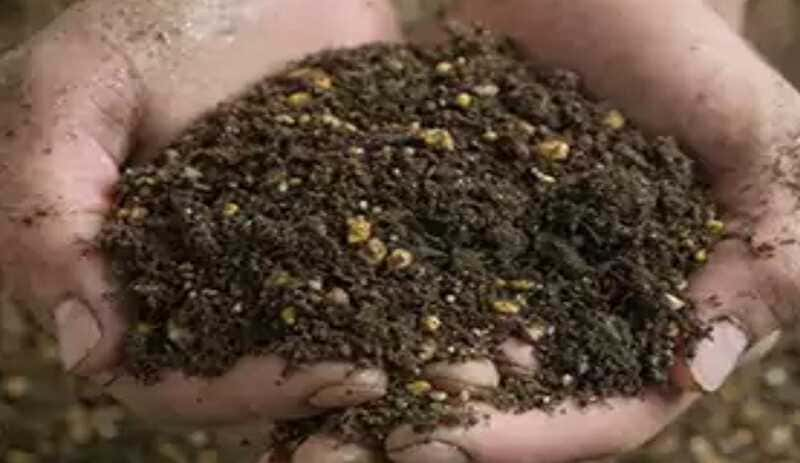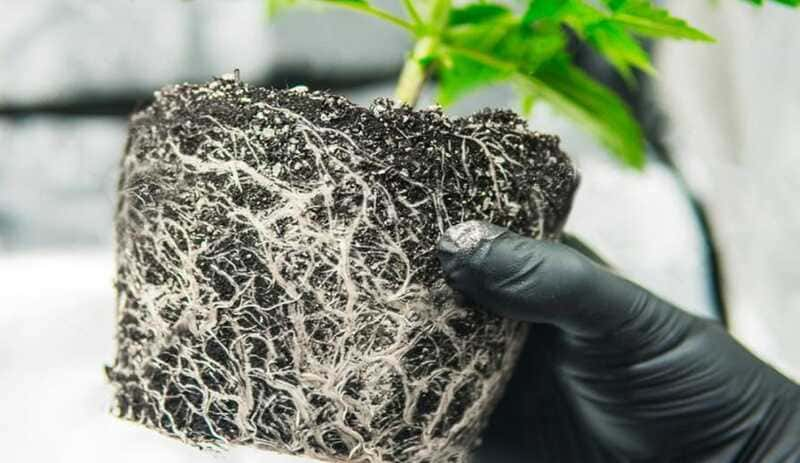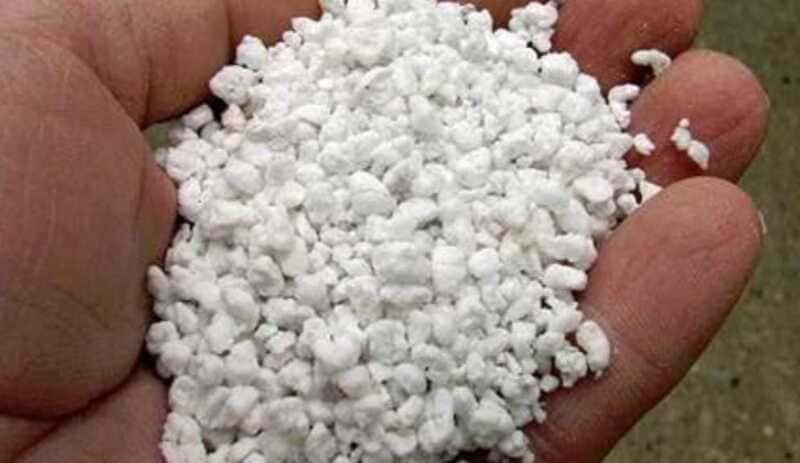The relationship between plants and the substrate in which they grow is a fascinating symphony of biological and chemical interactions that determine the fate of plant life. In the vast and diverse sphere of horticulture and botany, the substrate emerges as a critical element that exerts a profound and lasting impact on plant health, growth and prosperity.
Beyond simply being the physical base on which roots sit, the substrate is a complex ecosystem in itself, where plants make their home and seek the nutrients essential to their development.

Through this article, we will explore in depth the importance of substrate in plants, unraveling its multiple roles and revealing how its unique properties influence plant flourishing in an intimate, symbiotic dance.
From water retention to nutrient availability, from root structure to overall plant health, the substrate emerges as a silent but powerful master in the choreography of plant life. Let’s delve into this intriguing subterranean world and discover how the substrate becomes the solid foundation upon which lush gardens and bountiful crops flourish.
Introduction to the substrate and its importance.
In the vast world of botany and horticulture, the term “substrate” encompasses much more than simply the soil in which plants take root. This term encompasses the very essence of the relationship between plants and their growing environment.
The substrate refers to the medium that surrounds and supports plant roots, acting as the stage on which the drama of plant life unfolds. The importance of substrate in plants extends beyond its role as a mere physical support; it is an essential driving force that influences plant vitality and development.
From the moment a seed germinates and sends its first exploratory roots into the soil, the substrate becomes an intimate companion for the growing plant. Together, the roots and the substrate enter into a symbiotic relationship where each element plays a fundamental role. Not only does the substrate provide the anchorage necessary for roots to take hold and establish a solid foundation, but it also acts as a protective cradle that supplies the nutrients and moisture essential for plant development. In essence, the substrate becomes the heart of plant nutrition and the foundation upon which growth is built.
Nutrient uptake by plants is an intricate ballet that takes place on the subway stage. Roots, like skilled dancers, spread and intertwine in search of sustenance, while the substrate acts as the reservoir of essential nutrients that plants need to thrive. The texture and composition of the substrate determine its ability to retain water and nutrients, as well as its ability to allow oxygen to flow to the roots.
This delicate dance between roots and substrate is at the very heart of the importance of substrate in plants. A balanced and adequate substrate ensures that plants have access to the necessary nutrients at the right time, resulting in healthy growth, lush flowering and optimal resistance to environmental challenges.
Composition and types of substrates.
In the vast universe of horticulture, the substrate reveals itself as a canvas on which plant life takes shape. The composition of the substrate is a subject of great relevance, as its constituent elements are the brushes that shape the growing experience of plants. From the sand that provides structure to the peat that retains moisture, each component plays a critical role in the functioning of this subway ecosystem.
The distinction between organic and inorganic substrates marks a starting point in this exploration. Organic substrates, enriched with plant-derived materials, provide a nutritional richness that encourages the development of beneficial microorganisms in the soil. On the other hand, inorganic substrates, such as perlite and vermiculite, offer a more aerated texture and effective drainage. The choice between these two types of substrates depends on the specific needs of the plants and the growing conditions.

The importance of the substrate for plants becomes even more apparent when considering its application in different contexts. For houseplants, substrates must fulfill the delicate task of replicating a natural environment in a confined setting. Specific substrates for houseplants balance moisture retention with drainage, ensuring that roots have access to water without suffering from excess that could cause rotting. On the other hand, in the vast outdoor world, substrates intended for lawns, vegetable gardens and other open spaces must contend with inclement weather and the demands of vigorous growth.
In this mix of components and substrate types, an essential truth emerges: the importance of substrate to plants is a constant across the horticultural spectrum. Every choice of component and every decision between organic and inorganic has an impact on plant vitality and success. The right substrate composition not only nourishes and supports the roots, but also sets the tone for flowering and growth in harmony with their environment. In the following sections, we will delve into how these specific substrate choices shape the plants’ experience in their quest to thrive.
Substrate functions in plant growth.
The substrate, that hidden tapestry beneath the surface, plays a vital role in plant growth, and its functions are as diverse as they are fundamental. In its ability to retain water and air, the substrate becomes the necessary balance for hydration and respiration of the roots. This essential duo ensures that plants receive the moisture they need without suffocating their subway parts.
But the substrate is not limited to retention; it is also a master of drainage. Rain and irrigation deposit their excess in the substrate, and this is where its function as a hydraulic engineer comes into play. By facilitating the passage of water, the substrate prevents stagnation and saturation of the roots, protecting the plants from disease and ensuring their secure anchorage in the soil.
The soil, apparently inert, is actually a silent collaborator in the physical support of the roots. Like the scaffolding hidden in the construction, the substrate provides stability to the plants, allowing them to grow tall and reach the light they need for photosynthesis. This structural function is a cornerstone of successful plant growth and expansion.
Perhaps one of the most intriguing and critical functions of the substrate lies in its ability to hold and release nutrients. The substrate is a temporary storehouse of essential minerals that plants draw from as they progress through their life cycle. This nutrient relationship is essential for plants to flourish, as the substrate acts as a sustenance provider, delivering nutrients at the right time.
Interaction between roots and substrate.
The subway world, where roots intertwine with the substrate, is a fundamental setting for plant growth and vitality. Root development is a process that ranges from the first delicate extensions to the creation of a complex and robust network that will support the plant as a whole. The interaction between the roots and the substrate exerts a profound influence on this process, shaping the fate of the plant in its quest for life.

Each type of substrate challenges the roots to adapt to their environment. In a ballet of natural response, roots adjust their behavior and morphology to explore and conquer their new home. A sandy substrate requires extensive and long roots to extract water and nutrients in a fast-flowing soil. On the other hand, a clay substrate requires roots to be bolder and deeper to deal with slower drainage and water retention. This dynamic adaptation is evidence of the incredible plasticity of plants and their ability to thrive in a variety of conditions.
The basis of this subway drama lies in the structure of the substrate. A well-structured substrate provides the perfect setting for roots to find their way and successfully take hold. A balanced texture that promotes aeration and effective drainage is essential for roots to branch and penetrate without hindrance. In addition, the quality of a substrate directly affects the availability of nutrients to the roots, as a poor substrate can hinder the uptake of vital substances.
The importance of a well-structured substrate for rooting is evident in plant health and growth. A proper substrate allows roots to explore their environment, search for nutrients and absorb water efficiently. The result is solid rooting that lays the foundation for the development of the plant as a whole. In the following sections, we will take a closer look at how this interaction between roots and substrate translates into the visible world of plants, from early establishment through maturity and flowering.
Substrate Choice and Preparation.
Substrate choice and preparation are crucial steps in the art of gardening and agriculture. In this process, each choice is like a careful brushstroke on a blank canvas, with the potential to influence the plants’ growing experience significantly.
When choosing the right substrate, it is essential to consider the specific needs of the plants to be grown. Each species has its own preferences, from substrate texture to water retention and nutrient availability. Indoor plants may require substrates that balance moisture retention with adequate drainage, while outdoor plants may need substrates that are more resistant to inclement weather. The choice may also depend on factors such as the type of crop (vegetable garden, flower garden, lawn) and growing conditions (sun, shade, humidity).

Preparation and conditioning of the substrate prior to planting are essential steps to ensure an environment conducive to plant growth. This involves mixing and aerating the substrate to create a uniform texture that allows for proper drainage and good air circulation. In addition, organic amendments, such as compost or manure, can be incorporated to enrich the substrate with essential nutrients. This preparation process is like tuning an instrument before a performance: it establishes the optimal conditions for plants to develop healthily.
The choice between homemade and commercial substrates is a decision that can influence the direction and quality of the gardening project. Homemade substrates, custom-made from local and readily available ingredients, can be an economical and sustainable option. However, making homemade substrates requires a thorough understanding of material properties and their interaction. On the other hand, commercial substrates offer proven convenience and consistency. They are precisely engineered to meet the needs of a variety of plants and growing conditions.
Conclusions and Final Recommendations.
In the journey through the various facets of the relationship between plants and the substrate, an undeniable truth emerges: the importance of the substrate in plant development is a narrative that is woven into every root, every leaf and every flower. The substrate is much more than a mere support; it is an essential collaborator in the scenario in which plant life unfolds, a silent but powerful partner that influences every aspect of plant growth and vitality.
Substrate selection and management are fundamental skills that every gardener and grower must cultivate. Carefully choosing the right substrate for each type of plant and growing environment is the first step toward a successful crop. Understanding the water retention, drainage and nutrient needs of plants is crucial to ensure that the substrate provides an optimal environment. In addition, proper preparation of the substrate prior to planting, ensuring uniform texture and incorporation of nutrient amendments, lays the foundation for healthy development.
However, the relationship between plants and substrate is fluid and constantly evolving. The invitation for experimentation and innovation is an essential element in this conversation. Gardening and agriculture are living disciplines, where new ideas and approaches are constantly developing. Exploring new substrate mixes, adapting techniques according to the changing needs of plants, and seeking more sustainable solutions are valuable steps toward continually improving the interaction between roots and their environment.
Ultimately, the importance of substrate in plants transcends mere theory. It is a palpable truth that touches the heart of every garden and orchard, and manifests itself in the beauty and abundance of the flora. The deep connection between roots and substrate is a lesson in humility and resilience, a demonstration of how plant life adapts and flourishes in response to its environment. At the end of this tour, we are left with an exciting challenge: to continue to explore and improve our understanding of the substrate, working in harmony with nature to create green spaces full of vitality and color.

